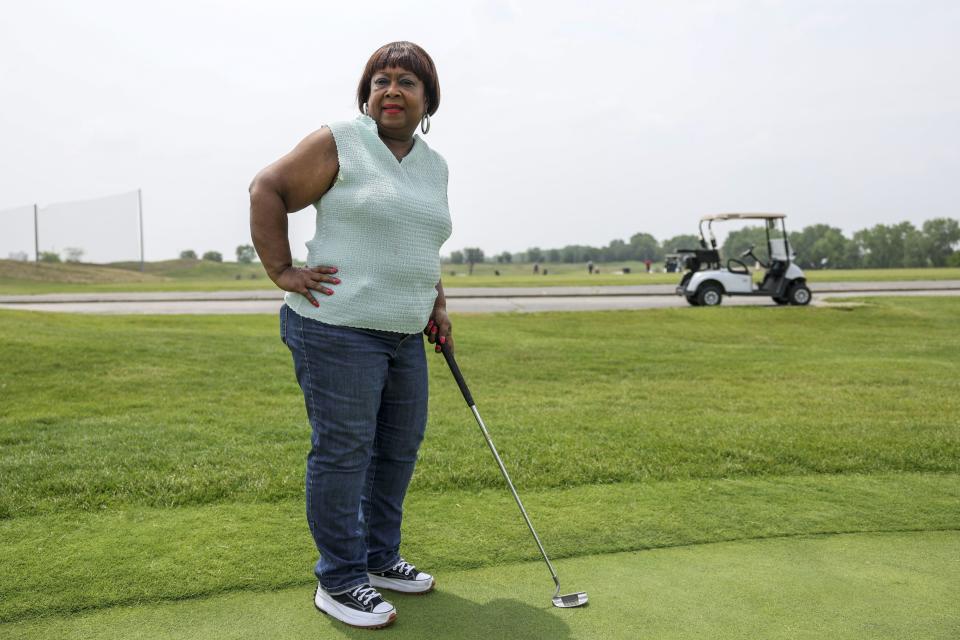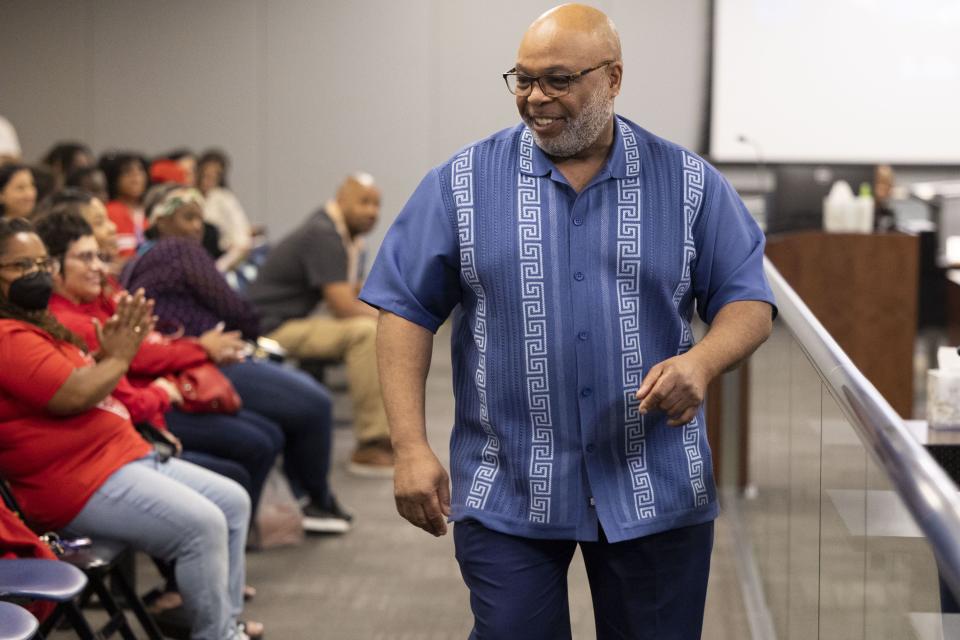Delay in Chicago’s elected school board map could put grassroots candidates at a disadvantage
- Oops!Something went wrong.Please try again later.
Activists who’d long opposed mayoral control over Chicago Board of Education appointments won a victory in 2021 when Illinois legislators voted to shift authority over the state’s largest school system to a board chosen by the people.
Two years later, just before 1 a.m. on May 26 in the waning hours of the Senate’s session, many of those same lawmakers hurriedly passed an amendment extending by nine months the deadline they’d given themselves to pass a map of 20 districts from which the new school board will eventually be elected.
In the moment, the deadline extension brought relief to many who took issue with the proposed maps. But pushing the map deadline also shortens the time candidates realistically have to spread their message, raising questions about whether the elected school board will be able to achieve its goal of better representing the interests of the community.
Instead of July 1, the district map is now due next April, just seven months before the first school board representatives will be elected.
“A lot of people who think they have an opportunity to run now may not,” said Taschaunda Hall, a mom and member of the children and parents advocacy group Kids First Chicago. “People get discouraged or they get busy and then the people who were interested, who were excited, that excitement has fizzled down. And now what are we left with?”
The Tribune spoke with three people who are considering running for a board position. All agreed that delaying the map deadline negatively affects grassroots, community-backed candidates and favors more well-heeled choices.
“For those with money, it doesn’t matter,” said community organizer Dwayne Truss of the Austin neighborhood, who was appointed to the Chicago Board of Education in 2019 by then-Mayor Lori Lightfoot and served until 2022. Truss says Lightfoot replaced him on the board because he did not support a proposal for a new high school on the Near South Side.
“As soon as they know what the map is, what it’s going to look like, (candidates are) going to hit the ground running because they will have all that infrastructure together. It could potentially put the … more independent candidates behind the eight ball.”
Truss says he is “open” to running for one of the board seats but added that having more time to run would not completely level the playing field between special interest-backed candidates and community-backed candidates.
“There are about nine and a half billion reasons why groups aren’t going to stay out,” he said, referring to the rough dollar amount of CPS’ annual budget.
Sylvia Y. Jones is a minister, organizer and the vice president of the South/West Area Civic League of Chicago who said she’s committed to running for a board seat. Jones said she started campaigning a year ago because she believes there are forces trying to prevent community leaders like her from winning these elections.
“There’s a lot of people that don’t want this. They don’t want this. And I know they don’t want it so they’re going to do anything they can to possibly make it hard for those who are going to come in like myself and speak truth to power,” she said.
Brian J. Gaines is a political science professor at the University of Illinois and has spent his career studying elections and public opinion. He agrees that more time for candidates in competitive, nonpartisan local races helps close the gap caused by large discrepancies in the funding of candidates.
“A lot of the reason it takes time is because getting a message out means scheduling a lot of appearances,” he said.
Gaines added that knowing one’s district is particularly critical for school board elections because, while the total number of people will be similar between districts, the districts will differ in how many constituents have children in the schools.
“So, all else equal, you want to know pretty far in advance what the districts look like,” he said. “What’s the right message for that district? Is it a lot of retirees who don’t actually have kids in school and you want to make abstract appeals to the way they think schools should be run? Or are you talking to parents of kids who are in a program that is being discontinued or being redesigned and that’s what they are going to be thinking about?”
Adding to the importance — and potential confusion — is that in the transition to a fully elected board, 10 members will be chosen by voters and 10 members will be appointed in 2024. The appointed seats will be up for election in 2026, when the shift to a fully elected board will be complete. The board president will be elected at large, bringing the total number of board members to 21, a threefold increase over its current size.
It’s hard to estimate the optimal amount of time a candidate needs to get their message out. There is such a thing as too much time, but too little time can truncate a campaign. Ideally, for a competitive, nonpartisan local election that is also a new position, Gaines said, candidates should have 12 months to stand up a campaign. And there is always a chance a group will sue if they are unhappy with the map, which could result in further delays.
“A lot of maps are immediately challenged,” Gaines said. “… There is definitely some risk to pushing back redistricting.”
The Illinois General Assembly will have the opportunity to figure out the map during the upcoming fall session. If they don’t, the legislature will revisit the matter in 2024.
“April is a deadline, but that doesn’t necessarily mean that we have to wait until then to do it,” Sen. Robert Martwick of Chicago, who has long championed the move to an elected school board system, told the Tribune in May. “I think one of the mistakes here was we just didn’t have enough time. I think we could have started this process earlier.”
The first boundary map proposal was released to the public less than two months before the original July 1 deadline.
“I am committed to and confident that we will complete the map in more than enough time for people to evaluate the districts, consider the communities involved and make the decision to run,” said Chicago state Rep. Ann Williams, who leads the House Democrats’ CPS Districting Working Group. “Whether the map boundary is drawn on one block or another doesn’t really matter. If you are engaged and interested, just like running for any office, I would highly recommend, go for it.”
Williams added it’s critical to get the maps right.
Natasha Dunn, a mother of former and current CPS students and co-founder of the Black Community Collaborative, is thinking “hard” about running for a board seat and is glad legislatures delayed the maps.
“If the maps are drawn so that you have that representation, then the idea is that it shouldn’t be as hard to engage that community,” Dunn argued.
But she agrees with the issues her other board member hopefuls expressed.
“How do you run a campaign, how do I activate the constituents when I don’t know who they are? I don’t know who they are without the map,” she said. “Understanding what my district is will allow me the opportunity to be able to fundraise properly … and be able to do some of the legwork that is necessary to be able to run a campaign.”
Even if the map deadline was not pushed, there are other sections of the legislation that the candidates say make it an uphill battle for independent candidates. The 2021 bill did not grant compensation for the role or allow undocumented citizens to vote, two things advocates say would help increase community representation on the board.
“It is systemically already built against the kind of candidates you (want) to present themselves,” Truss said.
He added there are still things people can do to prepare for their run even before they know how their district boundaries may shape up.
“Put your campaign infrastructure together, educate yourself as to all the rules of the role, put together a campaign committee, putting together people who can help you raise money,” he said. “Start working on your game plan, and then, when the time comes you can execute it.”


